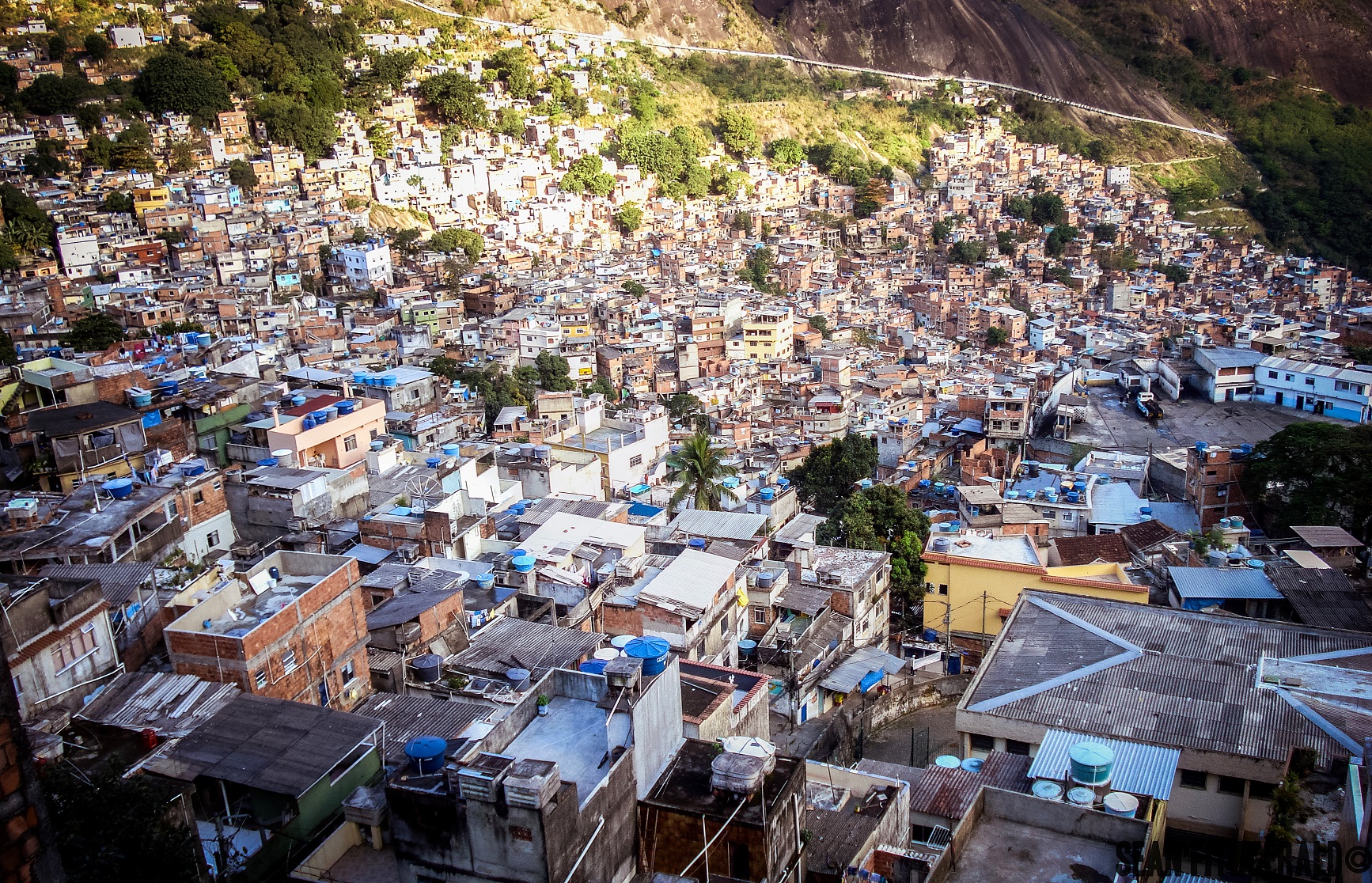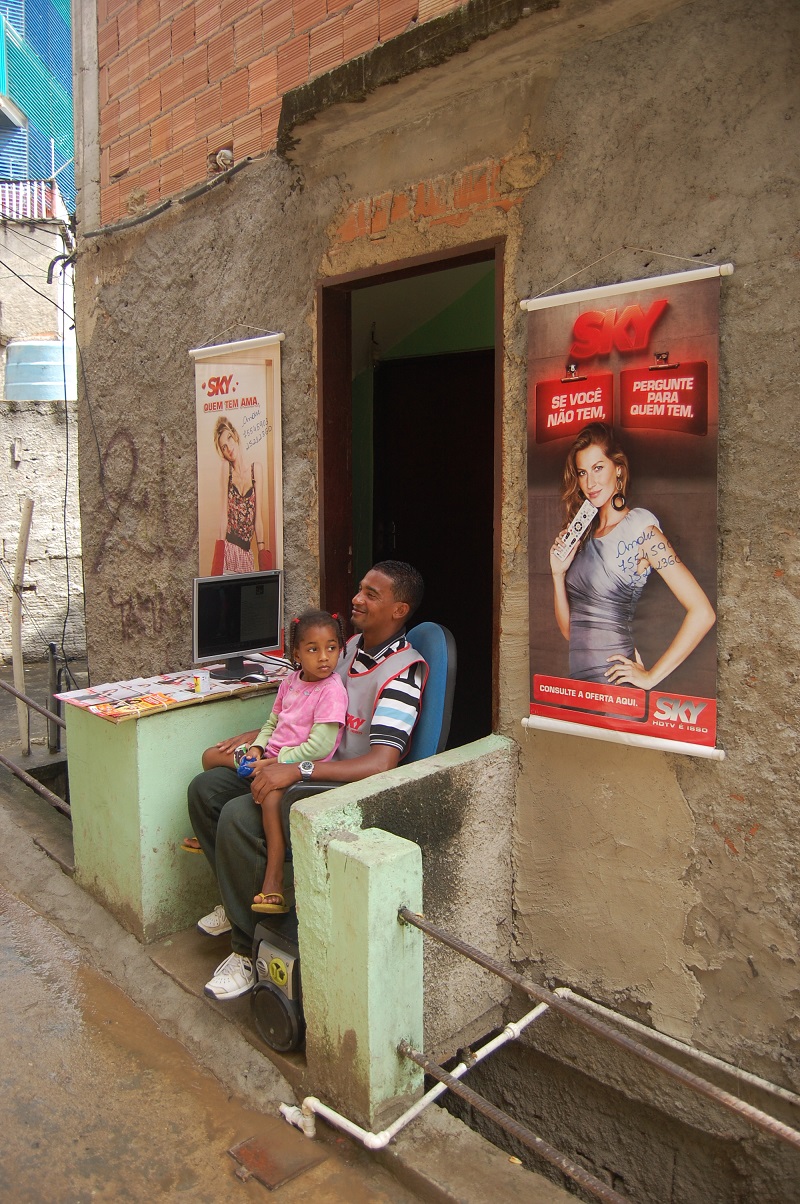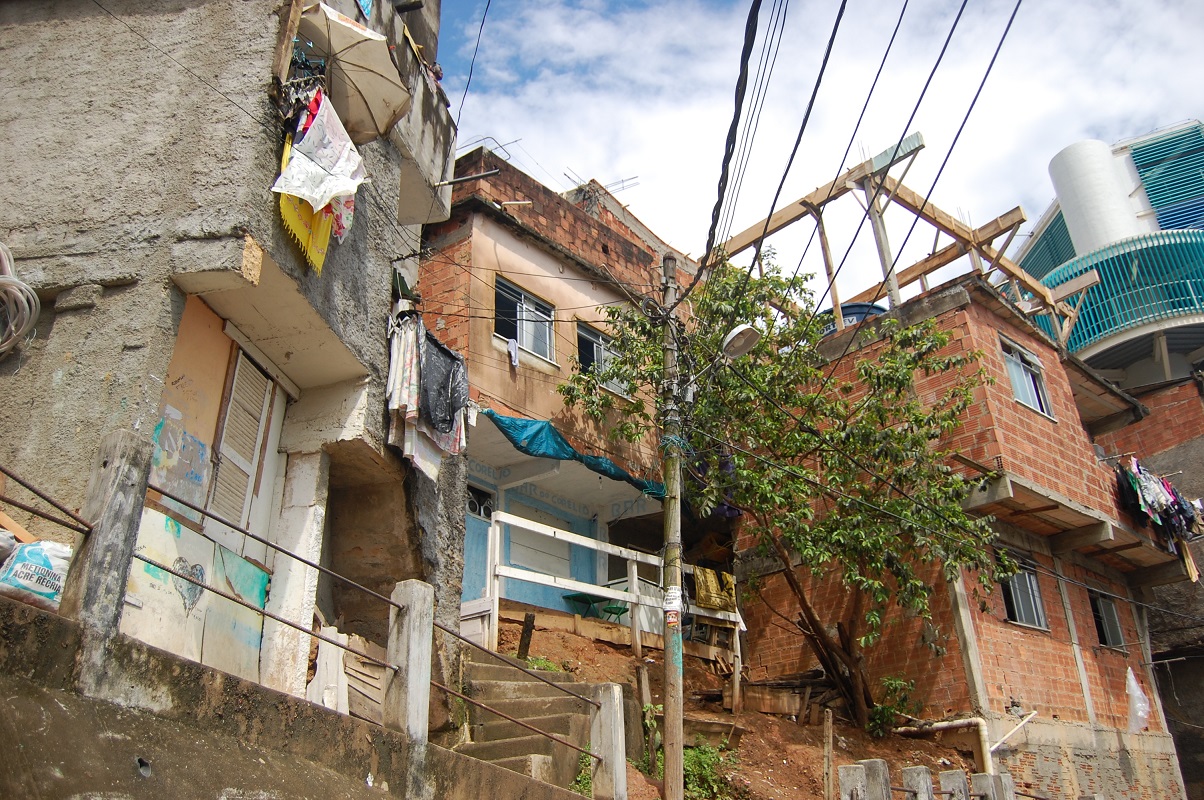 Rocinha Hill in Rio de Janeiro (source: sean fitz @ Flickr)
Rocinha Hill in Rio de Janeiro (source: sean fitz @ Flickr)
“Um país chamado favela” (literally, “A Country Called Favela”) is a surprisingly excellent book about the Brazilian favelas [1], written by Renato Meirelles and Celso Athayde. Without any recommendation, I spotted it on a local library and read it in one sitting. The approach is academic, but it is quite accessible and it is a work that finally portrays the favela dwellers as a human being — not a “problem” to be solved nor a “victim” to be saved.
The book is a result of a research conducted in 63 favelas in 10 metropolitan areas in Brazil, methodically listening to two thousand people. I intend to present here a brief summary of the work and give it a full endorsement, since it is a book very much worth reading in its entirety.
We today live in a duality. On one side, we find the conservative sectors that criticize very strongly the support the state has offered to improvement projects in the favelas. As always, they see them as a waste of tax money.
On the other side, we have a self-proclaimed ‘left’ that despises the access of the poorest to the universe of consumption. To them, it is nothing but alienation and dominating paternalism. They don’t see, for instance, the usefulness of a smartphone in the hands of the community inhabitants. – Preto Zezé
At the beginning of the book, this comment by Preto Zezé, president of CUFA (Unified Central of the Favelas) sets the tone. Despite being mentioned as actors on the stage, the protagonists of change are not the government nor outside NGOs, but informal entrepreneurs in the communities themselves: they are connected, informed and make complex decisions, just like any “formal” citizen.
Consumption is Wealth
The book shatters the stigmas of the favela one after another in the book by using surprising data, such as that “at the end of 2013, 50 per cent of the favela homes had Internet connection. . . . 85 per cent of their dwellers carry a cell phone in their pockets and purses. Among them, 22 per cent were smartphones.”
The author’s react positively when faced with a new reality where 47 per cent of the favela inhabitants have a flat screen TV in their homes. On the contrary: it is a sign of their economic ascent and social inclusion.
One of the real world characters mentioned is the driver and electronics technician Marivaldo, who lives at Complexo do Alemão. Marivaldo tells how he likes to watch both Flamengo soccer matches in high-definition and jazz classics by Louis Armstrong and Duke Ellington, where he finds references to his black heritage and the tunes he needs to get out of his saxophone. There are several examples that show the favela dwellers as flesh and blood people.
It becomes clear that the community people can decide what are their own priorities, be they cosmetic products, new shoes, a freezer, a PlayStation video game console, meat for a barbecue or mate for their gourd — as is the case of Mr. Claudio, who lives in a favela at the Santa Tereza hill in Porto Alegre. In retrospect, it is almost sad that we need to inform the reader that people in the favelas are just like them and what they buy is a sign of that.
The interpretation of the phenomenon of the “rolezinhos” [2] also illustrates the perception most people have about consumption, indicating the grave mistake made by storeowners who pegged the participants as criminals, and how reputation is important in a community is used where trust is not imposed by rules, but by experience and interaction:
In the rolezinhos and former movements, young people evaluate others and show them what they are, how they are and what they have. Ironically, they go to the mall dressed up in designer clothes, many times acquired there. They making it a point to show that they have their nice shirts, pants, hats, watches, all symbols of social ascent. That way, good looking, well dressed, and full of ornaments, they walk around proud. They try, even unconsciously, to reduce the discrimination they are subjected to.
Certainly, those storeowners and salespeople who considered it proper to remove them with pepper spray and baton blows from the world of consumption and entertainment. They gambled poorly, burning a great opportunity to conquer a new and dynamic clientele. Information about discriminatory conduct find their way around the hills and spread out quickly through word of mouth. That is the most effective ad campaign in the favelas. It serves to leverage businesses as well as to destroy reputations.
Informal entrepreneurship
 Entrepreneur in the Cantagalo Hill in Rio de Janeiro. (source: personal archive)
Entrepreneur in the Cantagalo Hill in Rio de Janeiro. (source: personal archive)
“The favela is a stronghold of creativity, inventiveness, full entrepreneurship, arts, affections, solidarity. If we agree on this, we should say that neediness is not one of our characteristics.” – MV Bill
One of the authors, Celso Athayde, is one of these visionary entrepreneurs of the favela. He had a difficult childhood, depended on charity and selling candy on the streets, slept in public shelters, and had his brother murdered very early in his life. He grew up switching from one job to the other, always involved with the community, until he founded the Unified Central of the Favelas (CUFA), the largest entity in Brazil dedicated to the development of the favelas. Afterwards, he built Favela Holding, a fund that works with community entrepreneurs, propping up businesses that are capable of generating jobs and income for the communities. One of Favela Holding’s largest projects is the building of a mall inside Complexo do Alemão. The project should cost 8 million dollars and should house 4 thousand stores, generating 10 thousand direct and indirect jobs. For the favela dweller, the mall is salvation.
According to Celso, “in recent years, the favela is becoming an incubation lab for new businesses. But why? The community inhabitant, for a long time forced to make his ends meet by himself, has developed skills and abilities for production and trade. He has learned how to sidestep his obstacles, to deal with the unexpected, and to market to the people.” The “favelado” (favela dweller) has incorporated entrepreneurship to his DNA: at Rocinha, 10.1 per cent of working people are entrepreneurs, while the numbers reach 8.1 per cent at Complexo do Alemão. The profile of this entrepreneur is even more telling: according to the Brazilian Micro and Small Business Support Service (Sebrae), the average entrepreneur is a woman, over 40 years old and not very Internet savvy.
Emerging Architecture
 ”[A]n architecture of symbiosis and cooperation.” (source: personal archive)
”[A]n architecture of symbiosis and cooperation.” (source: personal archive)
Being an excellent study on the favelas, it does not refrain to comment on the fascinating spaces that they have built and the emerging processes of development outside state regulation. The book highlights how construction techniques have evolved through the years, not because of legislation, but because the people wished to enrich themselves and “substitute brick and mortar for cardboard and zinc.”
In a healthy anarchy, that demands common sense and responsibility, people build their houses to best coexist with their neighbors. One home should not flood another, nor should it cover their windows. The favela, in the solidary of the people, engineers possible agreements and erects an architecture of symbiosis and cooperation.
The study also accurately explains of the origins of the favela in Rio de Janeiro, detailing the severity of the state programs that have historically tried to eliminate it. The book describes the social conflict during the Passos Reform [3], at the beginning of the 20th century, which, according to historian Maurício de Abreu, was one of the great catalysts of the expansion of the favelas in the then national capital. The “hygienist” view of back then, that treated the favela as “filth” to be “cleaned up,” survives. During the Carlos Lacerda administration in the 1960s, over 42 thousand people were removed by force from 32 communities. To this day, we hear from the more conservative groups that we have to “solve” the problem of the favela with military tanks and bulldozers.
Only by the end of the 20th century there were signs of the victory of the resistance, with the organization of the favela inhabitants to conquer a voice and defend the right to stay in their homes. The battle for the community rages on, more hopeful than ever. Ninety-four per cent of the people who live in the favelas consider themselves happy and 75 per cent see themselves in the middle class, ten years after the research.
Translator’s notes:
[1] Favelas are the Brazilian urban slums. Generally very large, unregulated areas with so-called “informal” buildings where poor people live in metropolitan areas.
[2] “Rolezinhos,” freely translated to “hangouts,” are gatherings of poor people at malls. They gained prominence in 2013 after a series of these gatherings happened were repressed by security in more upscale neighborhoods. To this day, there is still debate on whether rolezinhos are legitimate forms of expression or if they are just gatherings of criminals intended to intimidate storeowners and shopgoers in richer areas.
[3] Reforma Passos, or Passos Reform, was an urban renewal project undertook by mayor Pereira Passos at the very beginning of the 20th century. The reform intended to model Rio de Janeiro after Paris, creating large plazas and expanding streets — ultimately to welcome cars. The project involved also the destruction of the tenements, pushing poor people to the favelas.
Translated into English by Erick Vasconcelos.







